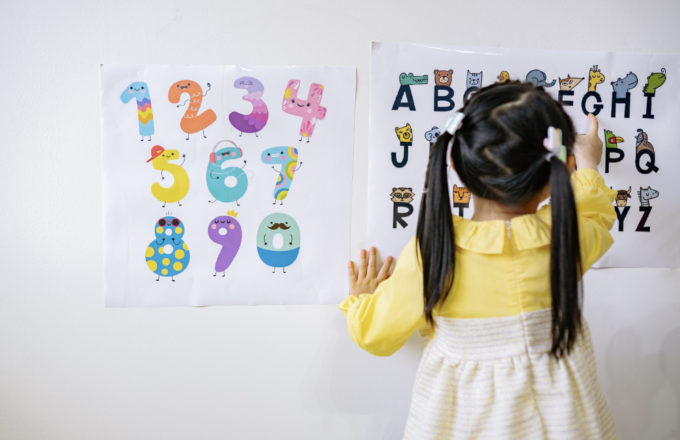“Teaching reading IS rocket science.”
Literacy expert Louisa Moats once famously said, “teaching reading IS rocket science” (Moats 2020). While a clever statement, when thinking about those students who appear to learn to read almost effortlessly, it initially didn’t resonate with me. Upon further thought, when contemplating those students who struggle acquiring literacy skills, this statement takes root. For the 4th grader who can’t identify the words, “the, to, or, and,” or the 7th grader that struggles through a first grade level passage, Moat’s words gain meaning. For those students who struggle with the written word, the need for a teacher that can perform “rocket science” is imperative.
Why do we need to perform rocket science for some students? Reading researcher, Maryanne Wolf, reports in her book Proust and the Squid: The Story and Science of the Reading Brain (2007) that reading ability is not an inherent genetic trait in humans: it is a specific skill that must be taught. Spoken language has been around for about 100,000 years, so our brain has evolved to acquire spoken language naturally. Written language, on the other hand, has only been around about 12,000-15,000 years, which isn’t enough time for the brain to evolve to make reading easy (Moats, 2019). Wolf (2007) notes that because learning to read is not “pre-programmed” in our genetic code, like learning to speak or walk, everyone must establish the required neural pathways in the brain to be able to master the skill of reading. She adds that reading is an atypical action and that, “to acquire this unnatural process children need instructional environments that support all the circuit parts that need bolting for the brain to read” (Wolf, 2007, p.19).
As students learn to read the pathways that connect the areas of the brain develop (Moats, 2019). Several areas of the brain are activated and key pieces involved in wiring of the reading circuit occur during a process called orthographic mapping. Reading researcher David Kilpatrick (2015) defines orthographic mapping as “…the process readers use to store written words for immediate, effortless retrieval. It is the means by which readers turn unfamiliar written words into familiar, instantaneously accessible sight words” (p. 81). Reading instruction needs to be designed to support the development of the necessary components of this process. Kilpatrick provides us with three critical skills needed for orthographic mapping: Phonemic awareness, letter-sound skills, and word study (Kilpatrick, 2016).
Phonemic Awareness
Phonemic awareness is the ability to hear, identify and manipulate individual sounds in spoken words and in order to develop automatic word recognition it needs to be developed to the point of proficiency. It is apparent that phoneme blending and segmenting skills are necessary when we see a student sounding out a word as they read, or breaking a word down in order to spell it. Phonemic awareness development cannot end there, though. Researchers have suggested that students should be able to manipulate the sounds in words orally and automatically. For example, a student with strong phonemic awareness would be able to engage in this type activity with ease:
Teacher: say spoon
Student: spoon
Teacher: Now say spoon, but instead of /p/ say /w/
Student: swoon
As an instructor supports students in their journey to do these tasks independently and proficiently, they can include scaffolds such as manipulatives (e.g. blocks representing sounds) and/or have them hone in on the articulatory features of the sound. To promote orthographic mapping, following the pronunciation of a written word, students need to be able to rapidly break down words into their individual phonemes, which necessitates strong phonemic awareness skills (Kilpatrick, 2016).
Letter-Sound Skills:
Students need to have solid and automatic letter-sound associations to be able to instantly recognize words. Letters are stored in our visual memory systems and may need hundreds of exposures in order to be learned. Students with learning difficulties may need to revisit letter-sound skills that they previously had solidified (Kilpatrick, 2016). Letter-sound inventories can be administered to students in order to pinpoint gaps. Diagnostic and prescriptive teaching is important in order to maximize time on purposeful tasks. Diagnosing areas of difficulty can be through letter-sound inventories, as well as careful records of where students are making errors or lack automaticity within decoding and encoding. Prescriptive teaching occurs when the reading teacher utilizes that information to determine which letters/letter patterns need extra attention as they plan direct instruction. Direct instruction of letter-sounds can include interacting with the letters and sounds in a multi sensory way. Students can see the visual formation, listen to and say the name and sound, write it on a page, white board and/or sidewalk and use their finger to trace it on a rough surface. Utilizing small groups of flashcards, teachers can provide multiple exposures of the letter-sounds that need to be practiced. Then, teachers can plan reading and spelling lists that incorporate targeted letters in order to apply these letter-sounds skills to their decoding and encoding work. According to Kilpatrick (2016), letter-sound proficiency is important when considering two key components of the process of orthographically mapping a word, efficient phonic decoding and linking individual sounds to written letters.
Word Study:
To create a solid base for literacy, students need to engage in learning about how words are built and the common patterns in the language in which they read. First, students can be instructed to engage in letter-by-letter decoding by connecting individual letters to sounds and blending them together to accurately read a word. Then, students can be instructed to recognize patterns that frequently occur in words. Patterns could include consonant blends (sm-, -st, sk-, etc.), syllable types (open, closed, r-controlled, etc.), and affixes (pre-, -ing, -s, etc.). When students can automatically recognize these patterns, they can more accurately tackle single-syllable and multisyllabic words and understand their meaning. Kilpatrick (2016) notes, “Basically, word study is the process of matching the oral phonemes to the letters to establish secure memory for future retrieval.” He goes on to explain, “The word-study aspect of mapping is the superglue that anchors words in permanent memory” (p. 41).
So, is teaching reading rocket science? When done effectively, for the students who need it most, absolutely. In fact, I might argue it’s harder than rocket science because the wires you are connecting are hidden. While recent research using fMRI imaging actually shows changes in brain images following reading remediation, teachers don’t have the luxury of this equipment in their classrooms. However, confirmation does occur when you witness a student who recently struggled to sound out three-phoneme words completes their first chapter book. The correct connection of wires is visible when a student fluently completes a passage, or in the eager report that they finished their book well ahead of schedule because they didn’t want to put it down.
References
- Kilpatrick, D.A. (2016). Equipped for Reading Success. Syracuse, NY: Casey & Kirsch Publishers.
- Kilpatrick, D.A. (2015) Essentials of Assessing, Preventing, and Overcoming Reading Difficulties. Hoboken, NJ: John Wiley and Sons, Inc.
- Moats, L.C., and Tolman, C.A. (2019). Language Essentials for Teachers of Reading and Spelling. Voyager Sopris.
- Moats, L.C. (2020). Teaching Reading Is Rocket Science, 2020. What Expert Teachers of Reading Should Know and Be Able to Do. Retrieved from https://www.aft.org/sites/default/files/moats.pdf
- Wolf, M. (2010). Proust and the squid: The story and science of the reading brain. Cambridge: Icon Books.



